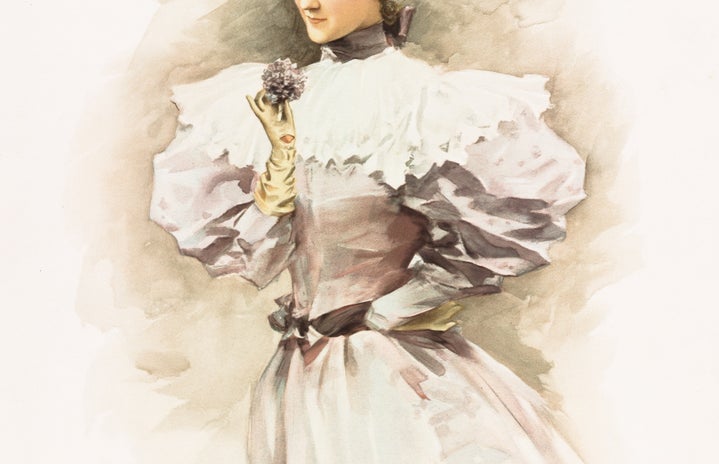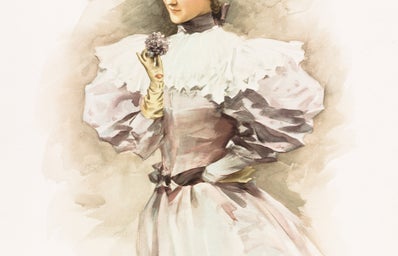We all know that fashion repeats itself – clothing that was stylish twenty years ago comes back with a bang. Yes, it means that we cannot escape the trends of early 2000’s now, however little we may like that fact, and some things never escaped fashion in the first place.
The question remains: is there anything new waiting to be invented? Have we already reached the limits of what can be enjoyed and appropriated by the wider populace?
We tend to think that fashion used to be much stricter and bound to certain structures, and while this may partly be true (especially when it comes to representing social class, status or ranks), fashion today is also maneuvered by certain norms and values. Market economy, individuality and fast-paced lifestyles are some of the main factors affecting trends in clothing and accessories. There used to be a time when the established classes in Europe were supposed to dress in costumes they couldn’t pull on without help. These days something like that would be considered highly unpractical and would not gain much popularity.
Here we have a small list of historical fashion fads that could make a comeback – at least in theory – but it would perhaps be quite freaky and quizzical if they did…
- Slits
-
Layering clothes of different material seems to always be in fashion. However, in the late Middle Ages and Renaissance, the need to show off varying, exquisite fabrics was so high, that people literally slit their sleeves and pant legs and tugged the underlaying fabric so that everyone could see the undershirt that had been invested on. Yes, “shredded” clothes were high fashion before, too! Sometimes sleeves were slit into separate pieces so that different fabrics could be mixed and matched, besides the puffing of the undergarments. The trend possibly started somewhere around 1470, when Swiss mercenaries, when they divided their loot of rich fabrics and sewed and bound the pieces to their colourful quilted armors. No question, this trend outraged moralists of the time, but was just as popular among rich mercenaries, rich people and royals, who adapted it in most imaginative ways.
- Mi Parti
-
Medieval fashion writ large, this delightful trend was all the rage among young European fashionistas of the 14th and 15th centuries. The Medieval “trousers” were made from long socks, which were stitched together at the groin area, so mixing two colors was rather easy and sensible solution. Women’s dresses were also sewn with Mi Parti -coloring. Even something quite simple like the use of different bright colours was often seen as immodest and boastful. If you ever visit cities like Venice or Florence, you will run into many Renaissance paintings where young “dandies” strut in their brightly and asymmetrically colored stockings.
- Walking Stick
-
Something I would love to swing around without making it seem like I am faking a challenging condition. Don’t tell me you never walked around with a big folded umbrella and pretended to be a 19th century gentleman!
The walking stick, due to its simplicity and many functions, has been around as long as people have used any kind of sticks and staffs to facilitate walking. The walking stick as a fashion item was born somewhere during the 17th century, when it slowly displaced sword in a gentleman’s hand. At first, it also functioned as a non-lethal weapon. The stick was fashionable all the way to the 1920’s.
Walking stick was also part of women’s fashion, especially in the early 20th century. They used to come in all shapes and sizes, and the idea of having your own spirit animal (or pet or whatever) carved on the knob is exciting – whilst there also used to be umbrellas, knives, guns or smuggled alcohol hidden in these things. Yikes.
- Leg of Mutton Sleeve
-
While writing this article, I watched a couple of high-profile music shows on tv, and I realized that variations of the leg of mutton have already wormed their way into high fashion! Broad shoulders were all the rage in the 80’s, and women’s “power dressing” was supposed to make women feel more empowered on workplace (I mean, clothing is a great start, but it’s sad to think that women would need sleeves to feel empowered).
However, “the leg” is most characteristic of the mid-19th century fashion, reaching its peak in the 1830’s, and with no pursuit of feminist goals. Since this puffy sleeve is all over the stage-dresses of artists and pronouncers today, maybe it is time for it to return to street fashion too – and not as some kind of slightly fattened sloppy tube, but as the real, regally puffy thing. However eminent that may be (or is it already back? Huh?), it will still be weird seeing from a historical perspective.
- Plus Fours
-
This is actually something I want to see back, and not only on golf fields. As an avid fan of Tintin, this piece of clothing has resonated with me on a personal level since I was a wee kid. Plus fours (reaching four inches below the knee) were invented in the turn of the last century, and they became highly fashionable in the 1920’s. Originally used in sporting events, the plus fours and their predecessor, the knickerbockers, were accepted in casual contexts too, thanks to king Edward VIII, who was a real fashion icon in the interwar period. Today, when choosing what to wear is not subject to your gender (or at least shouldn’t be), there are no obstacles in pulling plus fours or knickerbockers on – I know I would!
To be continued…?
This article was inspired by the book Fashion – the Ultimate book of Costume and Style, Dorling Kindersley Limited, 2012.


